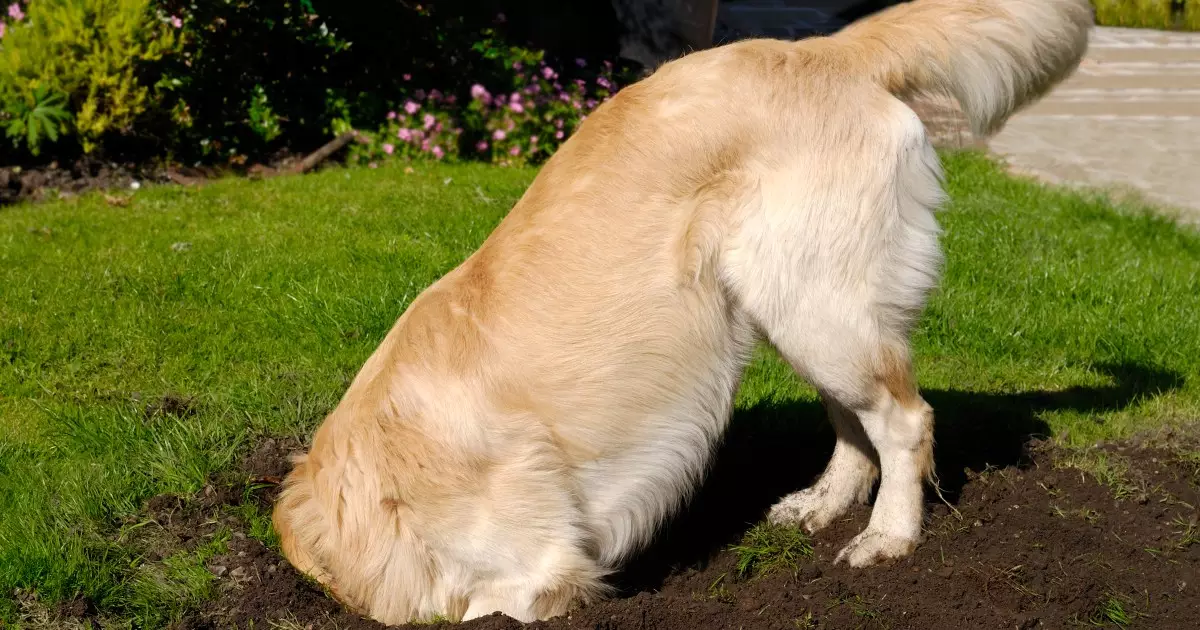Dogs are often seen as playful companions, but sometimes their playful antics can manifest in ways that might leave pet owners scratching their heads—quite literally! One such behavior is digging. While many dog owners might find their furry friends’ habit of burrowing through yards amusing, for others, it can be a source of frustration. Understanding the underlying reasons why dogs dig and exploring effective solutions can help bridge the gap between annoyance and appreciation.
Digging is an intrinsic behavior that many dogs display, rooted in their wild ancestry. Various breeds exhibit specific digging tendencies based on their historical purposes. For instance, terriers, bred to hunt small burrowing animals, exemplify natural earth-digging instincts as they search for rodents. Meanwhile, breeds with heavy fur coats, such as Huskies and Chow Chows, often dig to create cool spots in the ground during hot weather. These behaviors are not just random acts; they stem from instincts developed over centuries.
The innate drive to dig can also relate to a dog’s need for exploration or comfort. Dogs are curious animals, and digging can serve as a means to explore their environment, uncover hidden scents, or even to find a comfortable resting spot. This instinctual behavior becomes particularly pronounced in unneutered males, who may dig to escape and seek potential mates or prey. Understanding these roots is the first step toward addressing the behavior constructively.
Beyond instinct, emotional and environmental factors play significant roles in a dog’s digging behavior. A common trigger for this habit is boredom. Dogs left alone for extended periods, especially young dogs with abundant energy, may turn to digging as a way to occupy themselves. When a pet feels under-stimulated, they may seek out ways to entertain themselves, and digging often becomes the activity of choice.
Additionally, stress or anxiety can exacerbate digging behaviors. Environmental changes, separation anxiety, or lack of socialization can lead dogs to seek solace in the ground. For dog parents, recognizing these emotional elements is crucial. Addressing the emotional needs of a dog through proper stimulation, training, and socialization can mitigate digging tendencies significantly.
If you’re experiencing the frustrations of a digging dog, fear not! There are various strategies that can help you manage and redirect this behavior. Firstly, addressing the root causes is essential. If your dog digs due to heat, provide shaded areas or cool, spacious environments indoors. Similarly, if boredom is a contributor, it’s imperative to engage your dog both mentally and physically.
Exercise can take multiple forms—long walks, playing fetch, or engaging in interactive toys can help streamline energy levels. Keeping your dog mentally stimulated with training sessions and socializing with other dogs can also satisfy their innate curiosity and need for engagement. By being proactive, you are less likely to find your garden resembling a war zone.
For persistent diggers, creating a designated digging area can be an effective tactic. This area, often called a digging pit, allows dogs to indulge in their natural behaviors without destroying your yard. To set this up, choose a spot in your yard where it’s acceptable for your dog to dig. You can surround the area with stones to highlight it, and encourage your dog to dig there by burying toys or treats to attract their interest.
Training can play a pivotal role in managing digging habits. Positive reinforcement can guide your dog toward acceptable digging alternatives. Whenever they exhibit digging behavior in non-desirable areas, gently redirect them to their pit, offering praise or rewards when they dig in the appropriate spot. Over time, they will establish a connection between the act of digging and the rewards received in their designated area.
For dogs eager to dig under fences, physical barriers such as chicken wire can deter this behavior. By burying the wire along the fence line, you create a straightforward solution that discourages further attempts to escape or hunt.
While some dogs have digging behaviors that are deeply entrenched, be patient and consistent with your approach. This patience will yield fruitful results, restoring harmony between your home and your beloved pet.
Understanding the complexity behind your dog’s digging behaviors opens avenues for both behavioral correction and positive engagement. By employing a combination of physical and emotional stimulation, effective training, and alternative digging options, you can reshape these behaviors for a happier dog and a more beautiful yard.


Leave a Reply